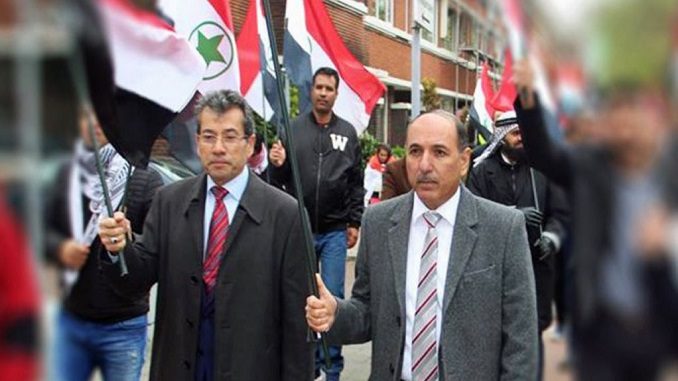
A chill wind blew through the Iranian expatriate community when Ahmad Molla Nissi, leader of a faction of Ahwazi Arab separatists, was shot dead outside his home in The Hague on Wednesday night.
While many in the Iranian opposition – particularly those with Persian chauvinist attitudes – eschew his politics and violent tactics against the regime, there is fear that this assassination could be part of a campaign of killings similar to the ‘chain murders’ that targeted leading activists during the 1990s.
These killings, carried out in Iran and Europe, included the infamous Mykonos restaurant assassinations that wiped out the leadership of the Democratic Party of Iranian Kurdistan, the largest Kurdish party fighting the regime. However, most killings were members of the intelligentsia who questioned the regime’s theocratic premise.
What does the murder say about Iran’s attitude towards the opposition, its methods and how it sees itself in the world?
Although some sudden deaths of Ahwazi leaders in Europe were seen as suspicious in the past, Molla is the first victim of murder. His death comes 12 years after the group he founded, the Arab Struggle Movement for the Liberation of Al-Ahwaz (ASMLA) came to prominence for its association with attacks in Ahwaz, which followed a brutal crackdown on Ahwazi Arab civil unrest. This occurred in the final weeks of the Khatami administration, which enjoyed positive relations with the West and before the nuclear-related sanctions, Al Arabiya reports.
Molla was a waning character within the Ahwazi movement. Many of ASMLA’s followers aligned with his rival in the party, the Denmark-based former teacher Habib Jabor.
Yet, there is little evidence that either Molla or Jabor have any significant traction with the Ahwazi community inside Iran. Ahwazi protest movements inside Iran have largely focused on labour and land rights, racial discrimination and environmental protection.
The killing is more likely to be a message to parties outside Iran. Following the Arab Spring, ASMLA had sought alliances with anti-Iranian Sunni Islamist groups. Before ASMLA’s split, Molla met with the leader of the Syrian Muslim Brotherhood and at one point there was some vocal support within the Free Syrian Army for the group’s aims, including the creation of an ‘Ahwaz Batallion’. But it was a succession of meetings ASMLA had that possibly prompted the Iranian regime to consider taking drastic action.
In response to the assassination, one prominent opposition activist said:
“Times have changed with a new administration in Washington, an alliance of Gulf countries in the region and all the additional sanctions. This has made them desperate and encouraged them to resort to their old ways. It is something the regime resorts to when it feels isolated and cornered. It is definitely related to the geopolitical developments against Iran. The Islamic Revolutionary Guards Corps (IRGC) knows this kind of action comes with a heavy price, so when they decide to do it, it usually means they are desperate.”
The killing was a warning, not only to Ahwazis but to the wider Iranian opposition, to stay out of the conflict that is sweeping through the Middle East. It communicated that the intelligence services can work with impunity within West and could target activists on their doorsteps. They are right to feel confident. Past assassinations in Europe have not had any impact on EU-Iran relations as European governments have placed commercial interests ahead of domestic security.
While Iran maybe seeking to demonstrate strength by killing Molla, it is a sign of the Iranian regime’s weaknesses, particularly considering President Trump’s pledge to designate the IRGC a terrorist organisation. The IRGC is principally behind the Iranian proxy war and may have had a hand in the Molla assassination.
In the context of mounting regional rivalries in the Middle East and an IRGC that is both more assertive and feeling more vulnerable, there is a sense within the expatriate Iranian opposition that Molla’s assassination may be part of a pattern and more killings in Europe are likely.
If a relatively minor character like Molla can be gunned down in cold blood, then anyone can be a target. The failure of European security services to take this threat seriously or put it ahead of economic interests in Iran only adds to the sense of terror that is gripping critics of the regime.
